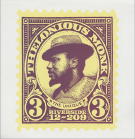| Previous :: Next Topic |
| Author |
Message |
Bernardo
Member


Joined: 08 Feb 2010
Posts: 2174 | TRs | Pics
Location: out and about in the world |
 |
Bernardo
Member
|
 Thu Apr 05, 2018 7:49 pm |
|
|
I found a book on navigation with a map and compass the other day and flipped through it. 90% was filler with a few facts mixed in about the actual use of a compass.
I don't claim that I couldn't misuse a compass, get lost, etc., but it struck me that there really isn't much to them and I saw nothing I didn't know already.
A compass points north. Knowing this fact, you can identify any direction. Subject to terrain, you can walk in any direction and you can find your position relative to visible landmarks. You need to consider grid versus true north versus magnetic north in some cases. You can use a compass as a protractor. You can orient a map with a compass.
What, if anything, am I missing? Does a compass have any other practical uses?
|
| Back to top |
  
|
 |
texasbb
Misplaced Texan


Joined: 30 Mar 2009
Posts: 1153 | TRs | Pics
Location: Tri-Cities, WA |
 |
texasbb
Misplaced Texan
|
 Thu Apr 05, 2018 8:52 pm |
|
|
You use it to maintain your bearing as you walk. You can't do that just by looking at the needle--you'll drift laterally. You need to set the dial to the appropriate azimuth and use the direction-of-travel arrow to identify distant landmarks and then move from landmark to landmark.
You use it to determine your location. You shoot azimuths to a couple or three known landmarks and then use the intersection of back azimuths to find where you currently are. It's called triangulation or resection.
You use it to identify distant landmarks by shooting an azimuth, transferring that (magnetic) reading to the map (true) so you can wow your buds with your knowledge of the name of every bump on the horizon.
Edit: You mentioned all of those...I'm just expanding.
|
| Back to top |
  
|
 |
CarriesNineFires
Member


Joined: 03 Oct 2016
Posts: 134 | TRs | Pics
Location: Seattle |
You're standing on a high point, looking at your destination in the distance (e.g. a lake). You will be descending into a forested valley with no trail in order to get to that lake. Once you're down in that valley, all you can see is the trees in your immediate vicinity; you certainly cannot see the lake. And it's easy to let little things like slopes in the terrain fool you into going completely the wrong way. So you need a guide.
Standing up on that high point, aim the arrow that's printed on the base of your compass at the lake. Then, keeping the arrow aimed at the lake, rotate the compass' bezel until the red North needle lines up with the red arrow printed on the transparent bottom of the compass. I'm assuming you're dealing with a standard, modern compass. Now, don't touch that bezel again.
When you get into that valley, periodically consult the compass. When you line up the red needle with the red arrow on the bezel, the arrow on the base will always point you toward the lake.
If your valley offers cliffs, difficult streams and whatever other obstacles, the arrow method becomes less effective. It's best for a relatively unobstructed, though blind, off-trail traverse.
Of course, consult your map as well.
I think this offers one answer to your question because it's an example of the compass' ability to be useful without making you think in terms of cardinal directions. The compass is obviously always relying on magnetic North but in this case, YOU are not.
|
| Back to top |
  
|
 |
joker
seeker


Joined: 12 Aug 2006
Posts: 7953 | TRs | Pics
Location: state of confusion |
 |
joker
seeker
|
 Thu Apr 05, 2018 9:59 pm |
|
|
Further expanding, with an altimeter and a compass you can often get a pretty good idea of where you are even with just one bearing to a landmark whose position is also clear on the map.
But I have nothing to add to the outline at top. I can use my compass as an inclinometer but that's just because it has that extra functionality added in, and not something inherent to any compass.
|
| Back to top |
  
|
 |
Malachai Constant
Member


Joined: 13 Jan 2002
Posts: 16092 | TRs | Pics
Location: Back Again Like A Bad Penny |
The OP is obviously not a sailor or aviator. It is the basic navigational instrument. Without a map it will enable you to navigate in a given direction and triangulate your position. If it includes a scale you can take bearings. With a map you can determine position by several independent methods. It requires no batteries and functions wen soaking wet. It does however require a function brain and some research and/or training.
"You do not laugh when you look at the mountains, or when you look at the sea." Lafcadio Hearn
"You do not laugh when you look at the mountains, or when you look at the sea." Lafcadio Hearn
|
| Back to top |
  
|
 |
Token Civilian
Member


Joined: 02 Sep 2010
Posts: 590 | TRs | Pics
|
Like so many things in life, the concept, as the OP points out, it pretty basic.
Its mastering the skill using the compass in conjunction with a map to consistently get it right in the field that is the challenge. See orienteering, adventure racing, rogaining, etc.
|
| Back to top |
  
|
 |
HitTheTrail
Member


Joined: 30 Oct 2007
Posts: 5459 | TRs | Pics
Location: 509 |
| Malachai Constant wrote: | | The OP is obviously not a sailor or aviator. It is the basic navigational instrument. |
That not only applies to sailing. When I worked in the Middle East I joined a group of friends for a 5 day caravan of off-road desert travel. We used an oil company base map to plot a bearing from our starting point to an abandoned well we estimated to be a four day drive across featureless sand dunes, gravel plains and low lying erosional topography. Sometimes we had high points to sight on distant land features but most of the time we just drove while looking at a windshield mounted ball compass. We were all amazed when we hit the well almost exactly dead on.
|
| Back to top |
  
|
 |
treeswarper
Alleged Sockpuppet!


Joined: 25 Dec 2006
Posts: 11277 | TRs | Pics
Location: Don't move here |
 |
treeswarper
Alleged Sockpuppet!
|
 Fri Apr 06, 2018 7:42 am |
|
|
And....no batteries are required.
I did find it hard to work a Silva compass in really cold weather, but I suspect it was the compass and not the weather. They can break, but the Silva brand is pretty darn tough.
What's especially fun about sock puppets is that you can make each one unique and individual, so that they each have special characters. And they don't have to be human––animals and aliens are great possibilities
What's especially fun about sock puppets is that you can make each one unique and individual, so that they each have special characters. And they don't have to be human––animals and aliens are great possibilities
|
| Back to top |
  
|
 |
DIYSteve
seeking hygge


Joined: 06 Mar 2007
Posts: 12655 | TRs | Pics
Location: here now |
 |
DIYSteve
seeking hygge
|
 Fri Apr 06, 2018 8:19 am |
|
|
| Bernardo wrote: | | . . . but it struck me that there really isn't much to them. . . . |
I agree if by "not much to them," you meant the most elegantly simple and effective item of outdoor equipment ever
|
| Back to top |
  
|
 |
JonnyQuest
Member


Joined: 10 Dec 2013
Posts: 593 | TRs | Pics
|
| Bernardo wrote: | | you can find your position relative to visible landmarks |
Works great if you can accurately associate the landmarks you see to those on the map. Sounds easy. And usually is...
|
| Back to top |
  
|
 |
joker
seeker


Joined: 12 Aug 2006
Posts: 7953 | TRs | Pics
Location: state of confusion |
 |
joker
seeker
|
 Fri Apr 06, 2018 11:10 am |
|
|
| Malachai Constant wrote: | | It is the basic navigational instrument. Without a map it will enable you to navigate in a given direction and triangulate your position. If it includes a scale you can take bearings. With a map you can determine position by several independent methods. |
Perhaps I misunderstood the OP but it seems to me that he (admittedly rather tersely) encompassed all this w/in his third paragraph.
|
| Back to top |
  
|
 |
treeswarper
Alleged Sockpuppet!


Joined: 25 Dec 2006
Posts: 11277 | TRs | Pics
Location: Don't move here |
 |
treeswarper
Alleged Sockpuppet!
|
 Fri Apr 06, 2018 12:03 pm |
|
|
For running traverses in the days before GPS, I got the best results with this Suunto.
suunto
For those not familiar with the lingo, a traverse is measuring distance and getting azimuths for the lines around something so area can be accurately figured out. One is supposed to be within a certain closure or it is not accurate enough. Closure is figured out by formula, which I can't remember, or by the computer that azimuths and distances are entered into. The worst error of closure I got, and it was not acceptable, was with a Silva Ranger in sub zero weather. I do not know if the compass was freezing up, but I was having to tap it to get the needle to move.
What's especially fun about sock puppets is that you can make each one unique and individual, so that they each have special characters. And they don't have to be human––animals and aliens are great possibilities
What's especially fun about sock puppets is that you can make each one unique and individual, so that they each have special characters. And they don't have to be human––animals and aliens are great possibilities
|
| Back to top |
  
|
 |
Schenk
Off Leash Man


Joined: 16 Apr 2012
Posts: 2372 | TRs | Pics
Location: Traveling, with the bear, to the other side of the Mountain |
 |
Schenk
Off Leash Man
|
 Fri Apr 06, 2018 12:56 pm |
|
|
OK, slightly off track, but:
- I have a compass with a magnifying glass and I started a fire with it once!
- I also used the edge of a cheap Silva to scrape klister off my skis.
- and I have one with an inclinometer which is sometimes handy on ski trips, for curiosity's sake if nothing else.
Nature exists with a stark indifference to humans' situation.
Nature exists with a stark indifference to humans' situation.
|
| Back to top |
  
|
 |
fourteen410
Member


Joined: 23 May 2008
Posts: 2629 | TRs | Pics
|
If it has a sighting mirror, it can be used for vanity purposes 
|
| Back to top |
  
|
 |
Joey
verrry senior member


Joined: 05 Jun 2005
Posts: 2798 | TRs | Pics
Location: Redmond |
 |
Joey
verrry senior member
|
 Fri Apr 06, 2018 2:05 pm |
|
|
Many 1:24,000 paper topos include a UTM grid. Many compasses have a clear plastic baseplate with a printed UTM scale. Together, you can collect approximate UTM coordinates for a feature on the map.
|
| Back to top |
  
|
 |
|
|